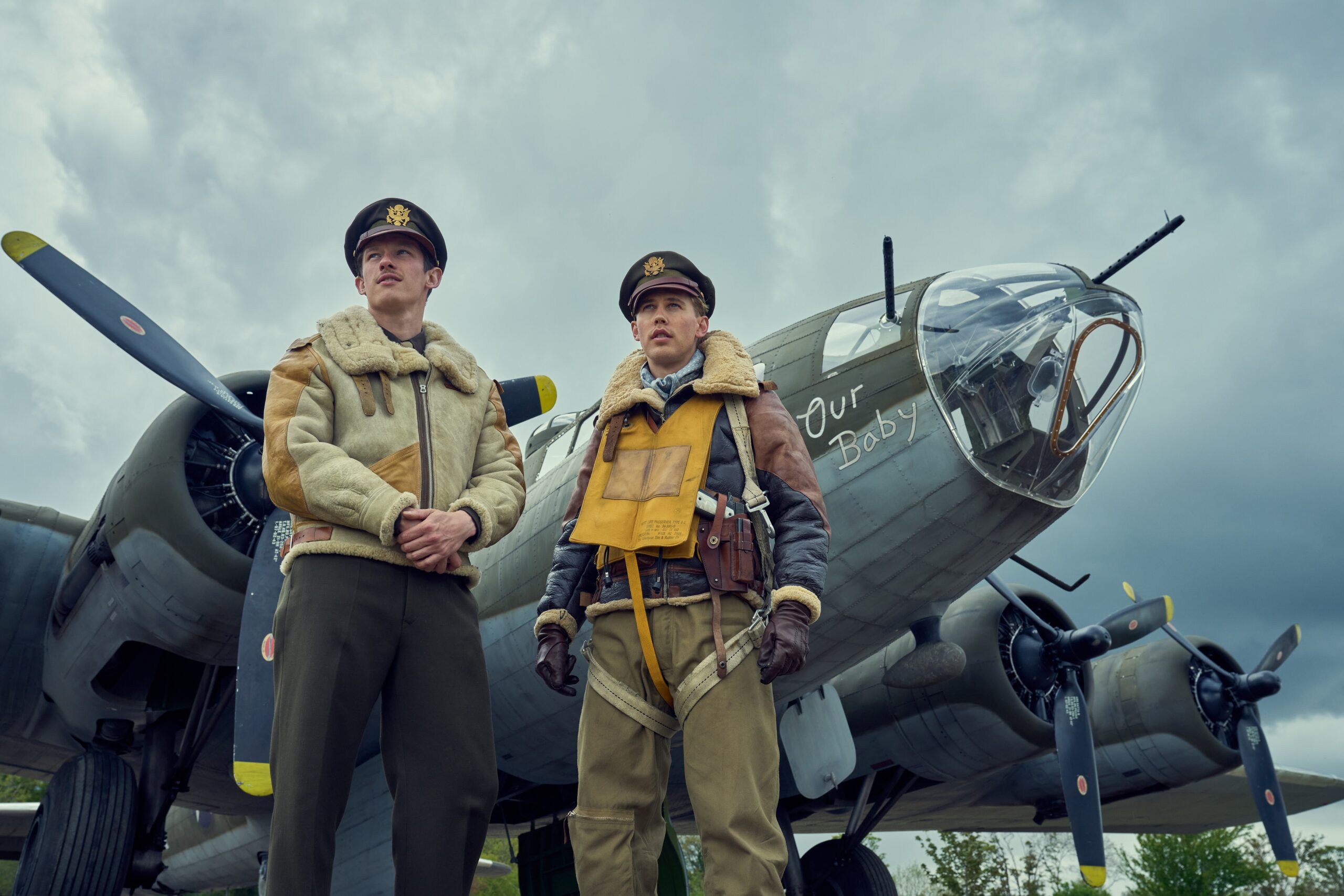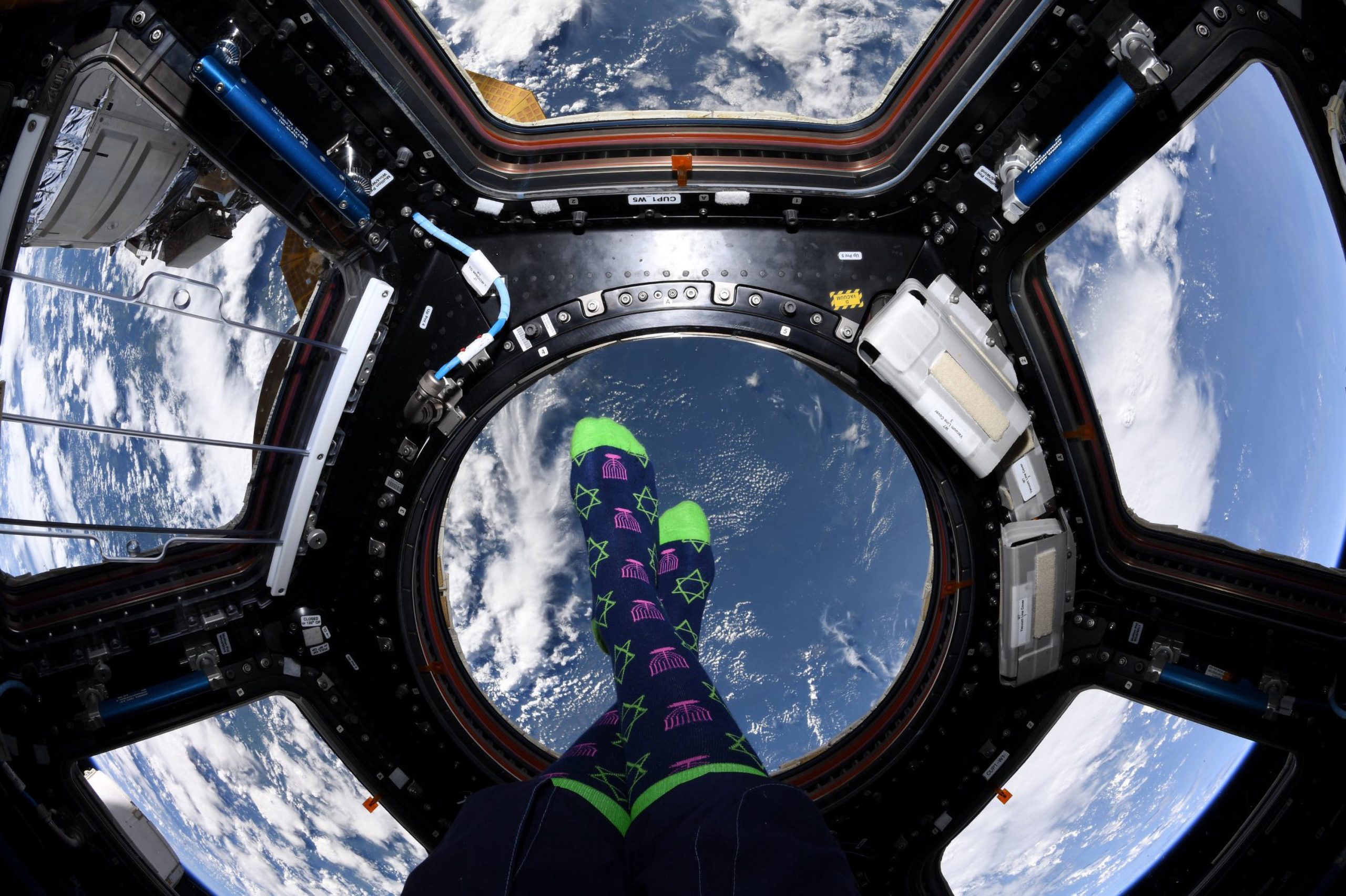
Oscar, BAFTA, and Emmy-winning costume designer Colleen Atwood spoke about the process that went into designing Masters of the Air.
Developed for TV by John Orloff from Donald L. Miller’s book, Masters of the Air follows the aforementioned Band of Brothers and The Pacific. Where those series followed the action on the ground in Europe and the Pacific theaters, this one follows the air campaign in the years preceding D-Day. Austin Butler and Callum Turner lead a cast that includes Anthony Boyle, Nate Mann, Barry Keoghan, Bel Powley, Rafferty Law, Jonas Moore, Matt Gavan, Branden Cook, Ncuti Gatwa, Elliot Warren, Joanna Kulig, Edward Ashley, and Josiah Cross. Tom Hanks, Gary Goetzman, and Steven Spielberg serve as executive producers. Darryl Frank, Justin Falvey, Steve Shareshian, John Orloff, David Coatsworth, and Graham Yost co-executive produce the series.
All episodes of Masters of the Air and companion documentary The Bloody Hundredth are available to stream on Apple TV+.

It’s so nice to meet you today. How are you doing?
Colleen Atwood: I’m good, thanks. I’m on the PCH, multitasking.
How did you first become attached to working on Masters of the Air?
Atwood: Well, I had worked with Tom and Gary before on That Thing You Do! and other projects. I’ve known Gary Goetzman since the Jonathan Demme years. When they had this project, they called me and I was so excited to be able to work with them again and then take on a project of this scope.
What was your process when it came to the costume design work on the series given the massive scope?
Atwood: Well, obviously, the first step was reading the scripts and breaking down all the military stuff and figuring out where I was going to get it, how it was going to get made, and then start that process. At the same time, the other layer of the world around the military, gathering the pieces for that. I started about nine months out and the first thing I started with was the leatherwear because it was the most difficult to make and I needed a large quantity of it. It wasn’t out there in the world. It didn’t exist.
Did the pandemic have any impact on your process?
Atwood: Well, it was an interesting time because when I started the project, we were still isolating here in the US from the pandemic and mainly in the UK. But by luck, Gary Eastman, who owned the company that was making the leather, was able to be open in the UK. We started the process, actually, with what I call Zoom manufacturing. We talk about it. We were poised to begin hardcore, but we really got a lot of the early things going on. I found a jacket that I liked the collar exactly. He had the leather already there. He could source the leather that we needed in the sheepskins. We got all that in place so once the project really fired up, we were ready to go to start making this stuff because the lead time audit was big to make that much. I mean, it’s not like he’s an industrial guy. He’s got five people sewing for him. It was all handmade very painstakingly over a six month period of time.
Yeah. There’s almost 5000 people that need costumes on the show?
Atwood: Easily, yeah. Military and civilians, definitely, yes.
With that many people, did it ever feel overwhelming?
Atwood: It didn’t feel overwhelming. The hardest part, I think, probably the part where it came the closest to overwhelming, is when we were about two-thirds of the way through and we were shooting two or three blocks—different segments from different blocks—and then trying to prep for the gigantic ending. You have a crew already of probably 70 or 80 people that are coming to work every day at 4:00 in the morning, getting ready, splitting up and taking care of all the crowd and the principals. You still have to have another crew that’s prepping for this huge concentration camp scene that was very different kinds of clothes. The aging was really different. That part was probably the biggest peak, I’d say, of the design process in the show. It came at a point where my supervisor and I were both pretty tired already. It was kind of like that thing where you always say you always have to be ready for the second wind and that’s kind of when our second wind hit us. Once we got that over that peak and everything was in place, the anxiety level went down a little bit.
I will say from watching the series that the concentration camp scene was probably one of the most emotionally heavy scenes for me to watch.
Atwood: Yeah, it was heavy to be there every day. The people that were in the show, the guys that came that worked in the show—day-to-day extras and all those guys—were so committed to it. They would show up every day early, cold. It was very loved by the people in it and in a sense of duty and storytelling that I’ve never seen before.
Yeah, I was just telling Chris Seagers and Blake Neely when I spoke with them that this was hands down the best limited series that I have seen in years.
Atwood: Thank you. Well, we all loved doing it. It has a special place in my heart, for sure. I’m very proud of it and I’m just proud to have been part of it.
Yeah. You worked with Tom on That Thing You Do! so how has that relationship changed through the years?
Atwood: Well, I think that with Tom, I worked with him on that, I worked with him on Philadelphia. I worked with him a couple times. With Tom, it’s always—you just kind of go back to the first time you ever met. I met him on Joe Versus the Volcano. That was really young. I’ve known him over time and you just kind of admire who he is as an actor and as a person but he’s kind of always the same guy. He just treats everybody totally well. Same with Gary Goetzman. I mean, they’re just amazing guys.
Yeah. I mean, That Thing You Do! was one of my favorite films growing up.
Atwood: There’s nothing wrong with that movie. It’s just full of joy and sweetness.
Yeah. In fact, Steve Zahn spoke at my college graduation.
Atwood: He did?!?
Yeah.
Atwood: Good for him. He was hilarious. I haven’t seen him in a long time.
I interviewed him a few years ago for a film he was in over Zoom and mentioned that he spoke at my graduation. I’m like, did the honorary doctorate help his acting career or something like that?
Atwood: (Laughs) You never know.
Having won four Academy Awards, how do you manage to stay grounded?
Atwood: Well, every job is a new experience and it’s like, they—I just do the work. The statues are nice. You get them that day, you go home, you get up in the morning, and you go to work. I love what I do so they’re nice, but they’re not the reason to do the job.
Yeah. How did you first get an interest in becoming a costume designer?
Atwood: Well, sort of. I did a lot. I studied art in school and I worked in fashion in the seventies. I’d always loved movies, but I never even considered that I could be part of working on movies where I grew up in eastern Washington state. My fashion career brought me to New York and I just saw a possibility there in my life and decided I’d give it a shot. I signed up for a summer course at NYU film school, that I didn’t get in and then I got in. I started doing it, but the people were so young and I was so much older than them that it was a good idea but it wasn’t really a good fit.
By chance, I got a job on a movie in the art department from somebody I knew from where I from Seattle. Her mom was production designing Ragtime and I told her, oh, my G-d, I’ll do anything to have a job on a movie. The first day of pre-production, somebody didn’t show up for work. The PA person didn’t show up for work in the art department so I got my first job and had many starvation years before.
Back when you start out, you don’t get job after job after job so you sit and wait, hope for something else. I ended up going eventually from job to job and then getting some good breaks. Michael Apted gave me my first feature and then I worked for Michael Mann on my second one. I got to do a job with Jonathan Demme. I started repeating—working with the different directors—so you build up relationships and different producers, directors, actors. It just depends but that’s how it happened for me.
As far as costume design goes, have there been any major changes in how that work gets done since you’ve started?
Atwood: Well, it gets done—the prep times are shorter. The way it gets done is project-dependent. I think that I work in the UK a lot and there’s a lot more craftsmanship support in the UK in filmmaking than there is in the US. When I come back here to work, I’m always kind of sad that there isn’t more of a kind of culture of that in America and in film. I think there are people that do it, but it’s not just common as in other places.
It was so nice getting to talk with you this afternoon or this morning. I’ve lost track of time!
Atwood: I know. Well, it’s kind of a blur. Are you in LA? Is that where you are?
No, I’m in Chicago so it’s afternoon here, morning there.
Atwood: Yeah. Yeah. I like Chicago. I did Public Enemies around there. Alright, well, thank you. Have a good afternoon in Chicago.
Yeah, I will.
Atwood: Alright. Take care. Bye.
All episodes of Masters of the Air are available to stream on Apple TV+.
Please subscribe to Solzy at the Movies on Buttondown.







